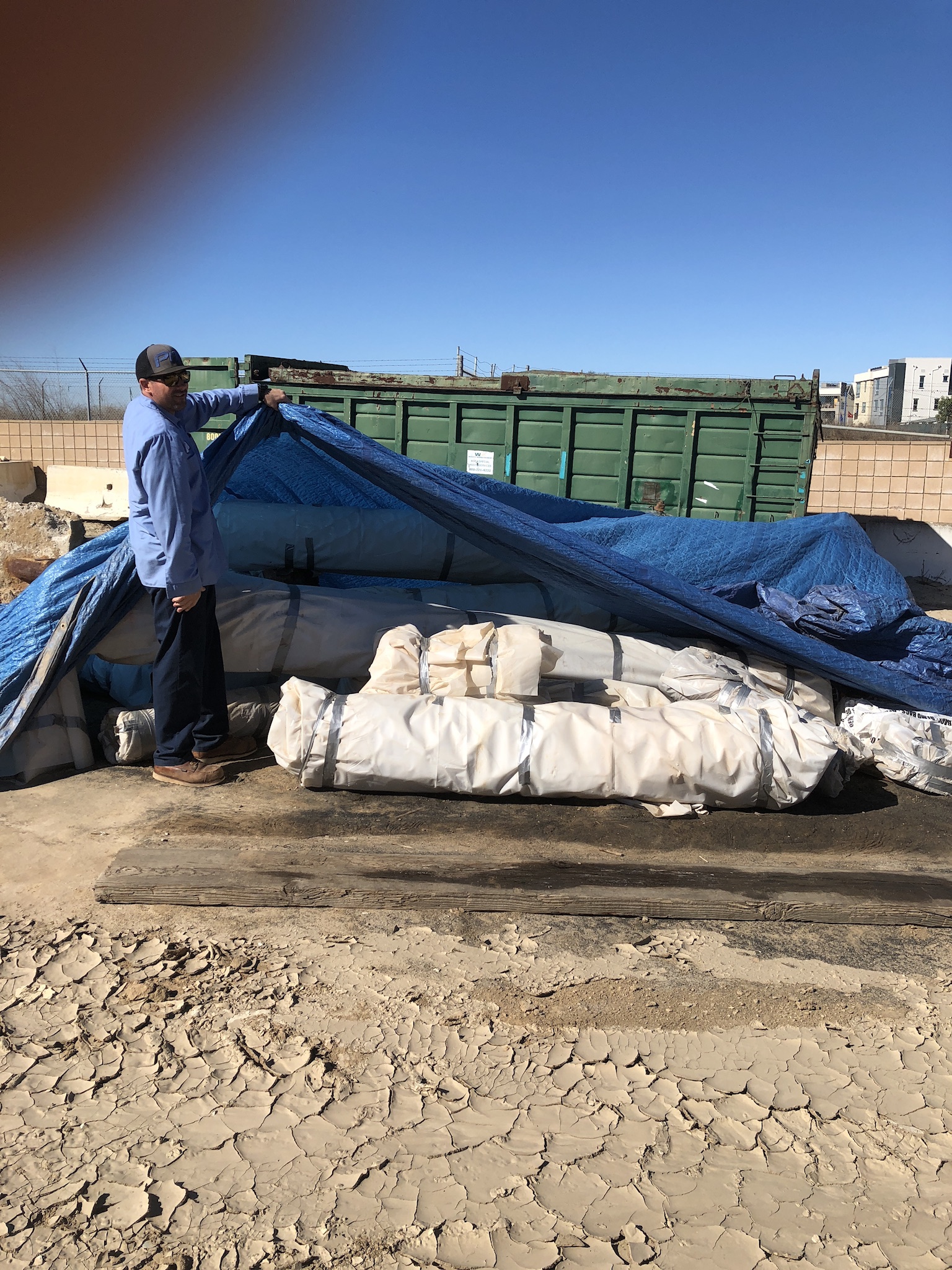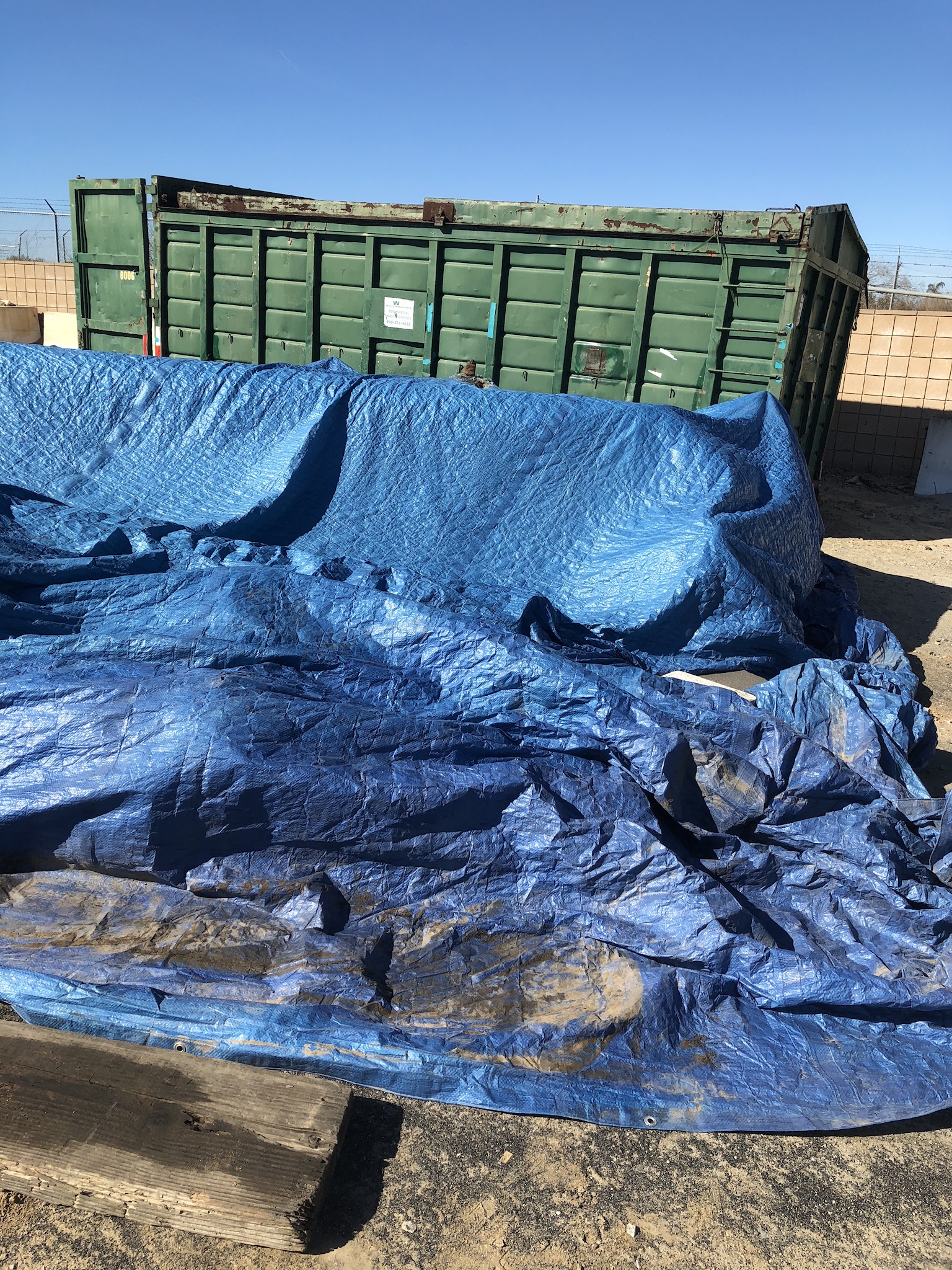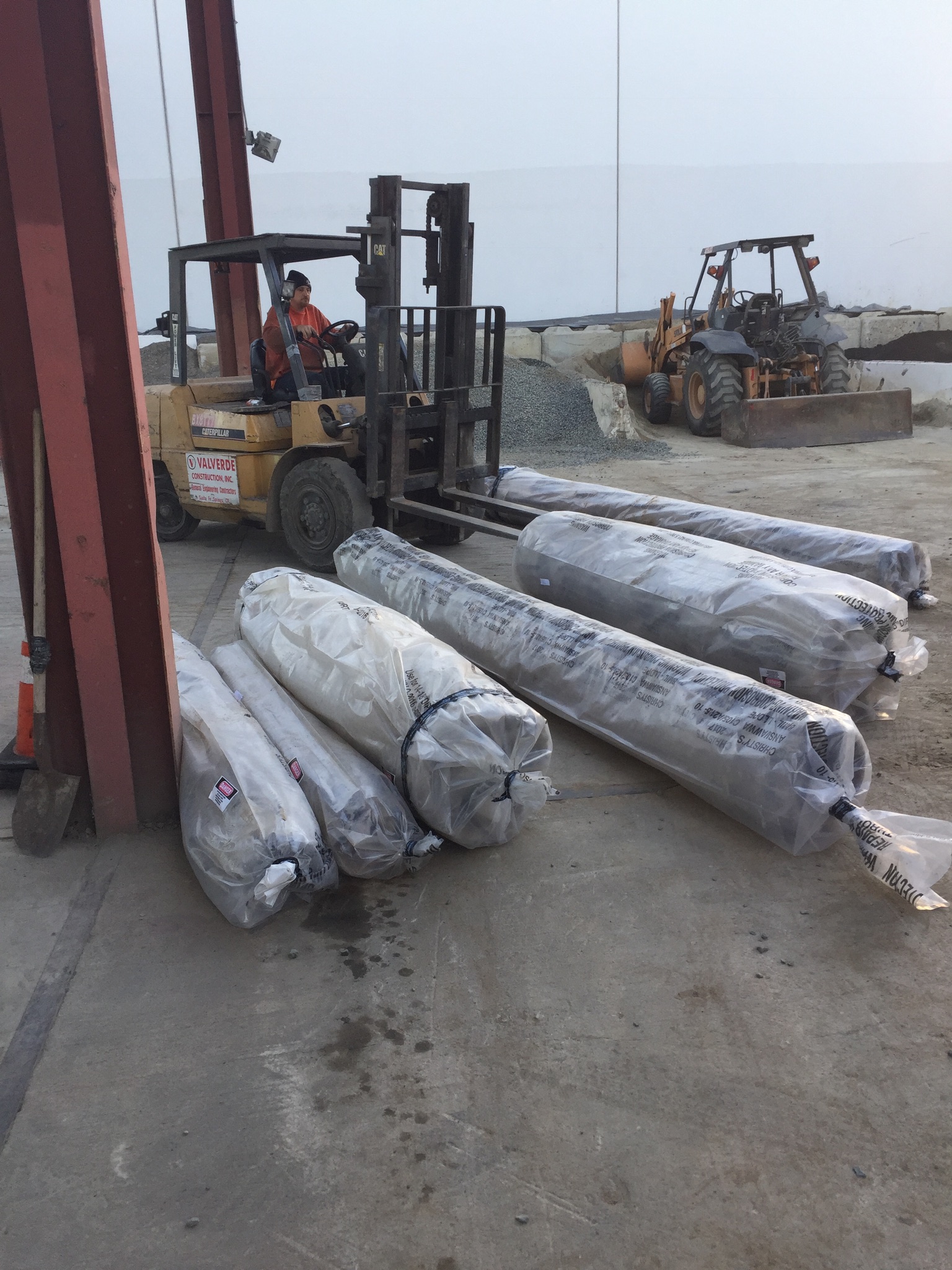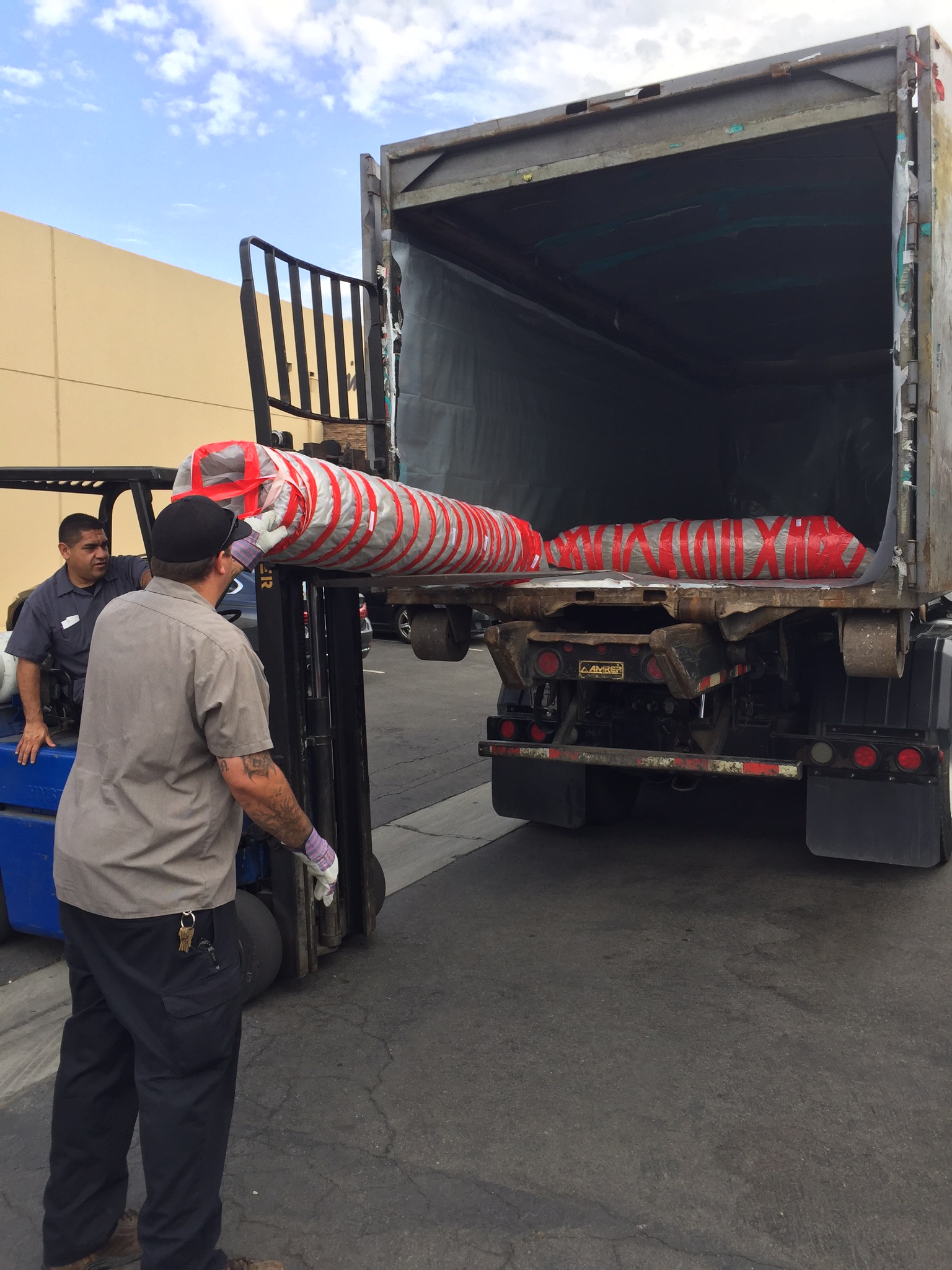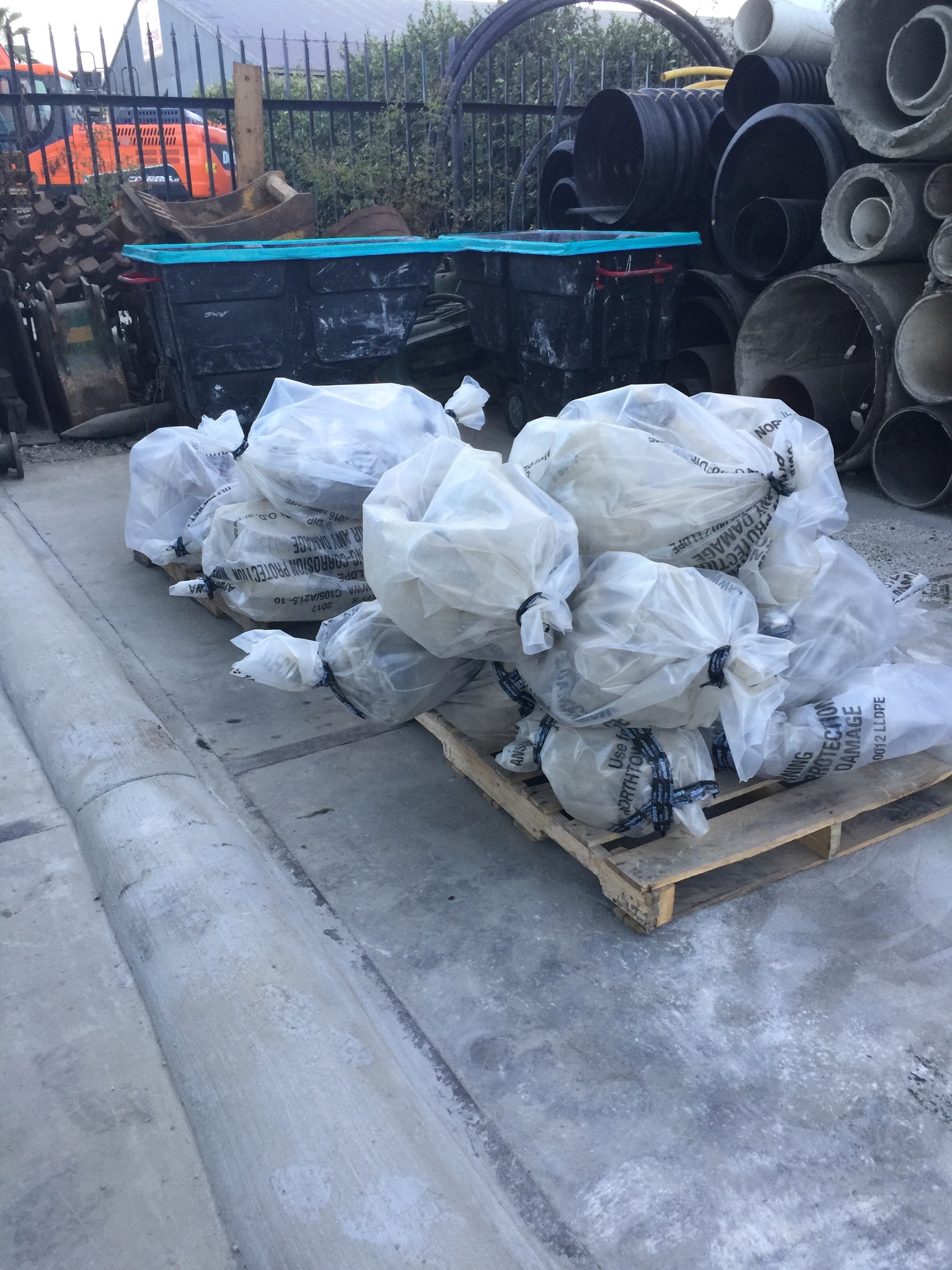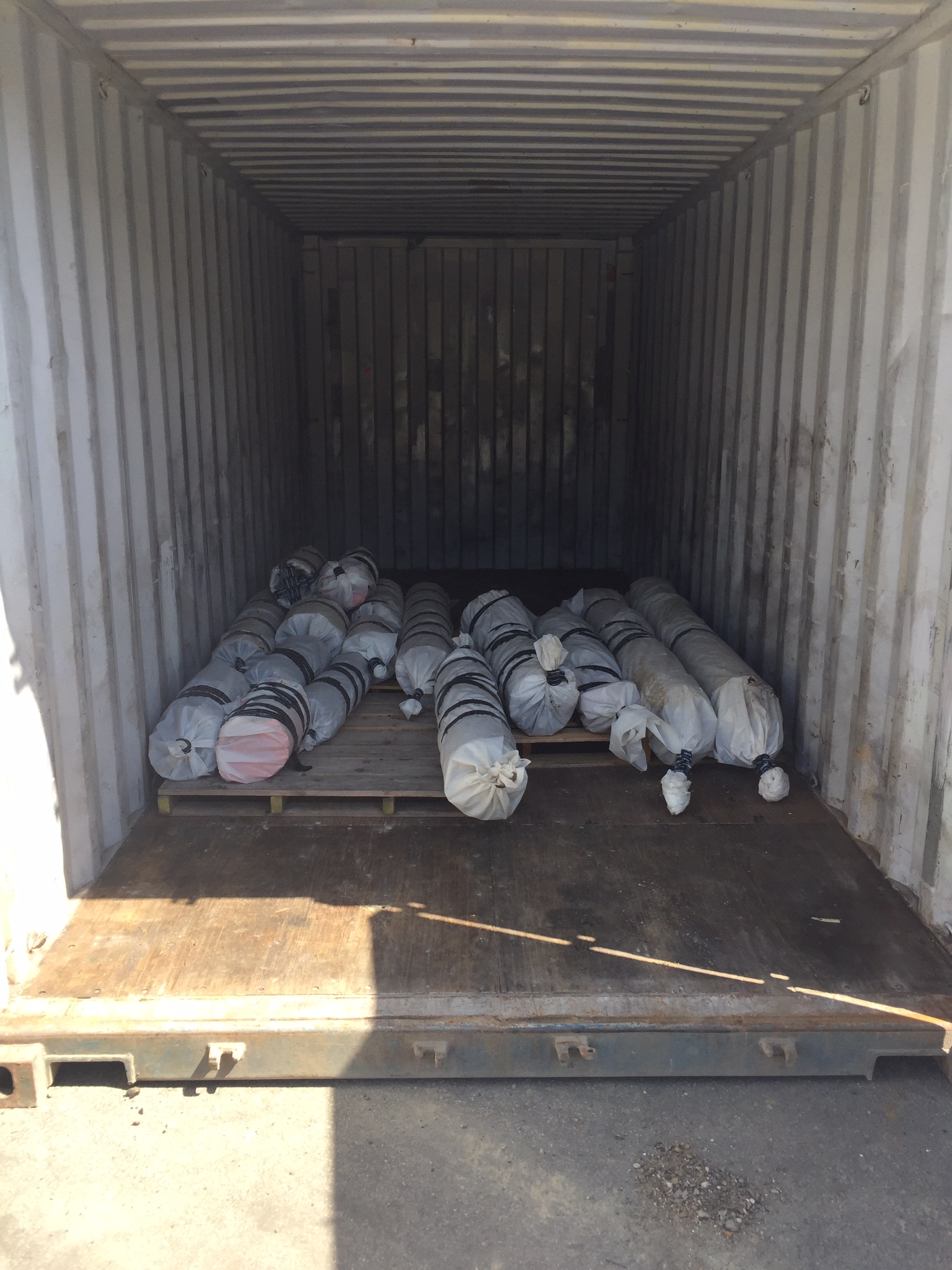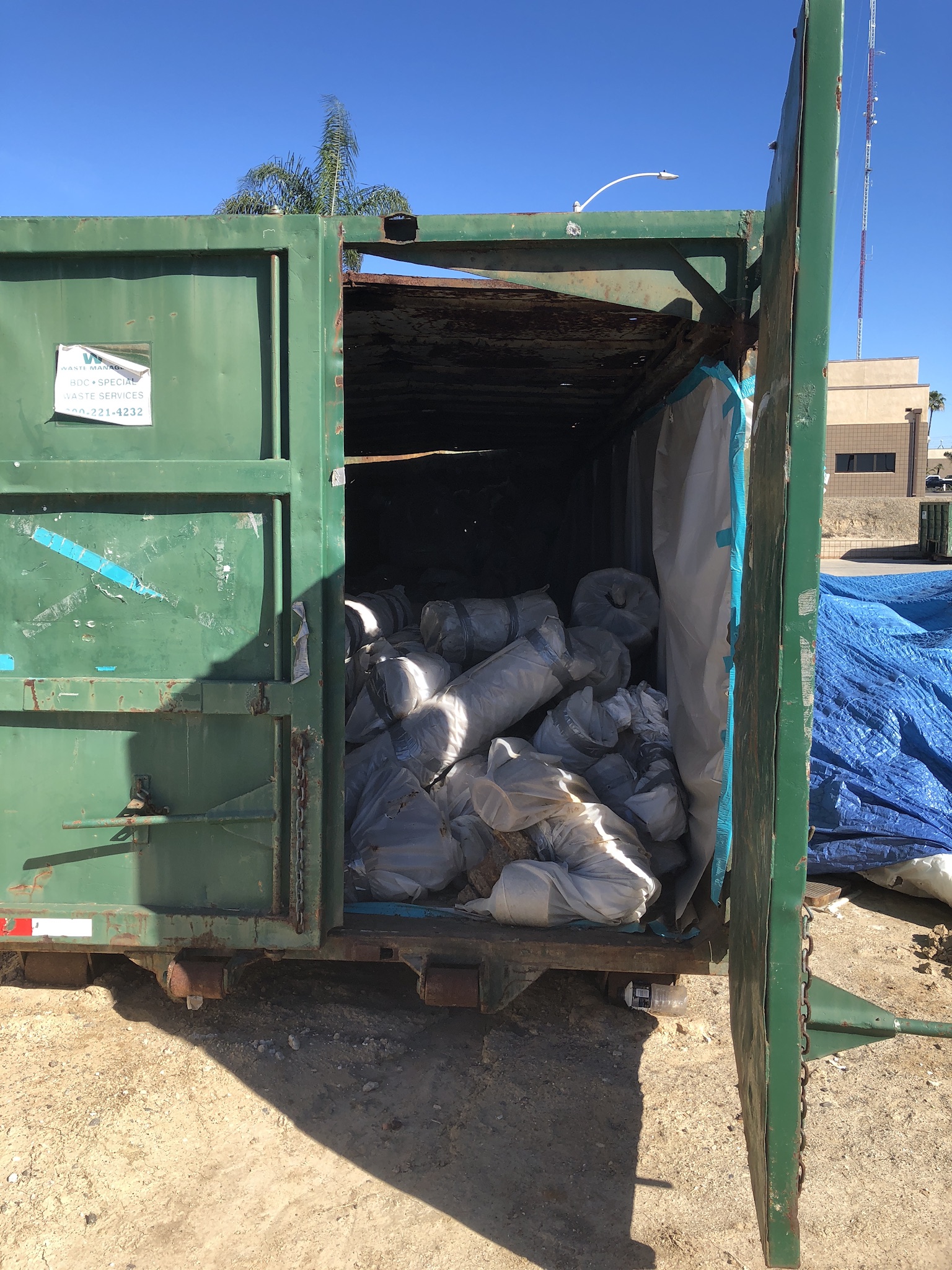
Managing Asbestos Hazardous Waste
How do I get a California generator ID number?
Contact us for details , ewastedisposal@gmail.com
If you do not routinely generate hazardous waste, but are generating hazardous waste (including asbestos) as a result of remodeling or asbestos abatement work, you can obtain a one-time temporary state identification (ID) number. A state ID number is required since asbestos is not regulated by the United States Environmental Protection Agency (U.S EPA) as hazardous waste under the Resource Conservation and Recovery Act (RCRA). Asbestos is considered a “non-RCRA” hazardous waste if it is friable and contains one percent (1.0%) or more asbestos as hazardous waste.
How do I package hazardous waste asbestos?
Asbestos is an airborne hazard, so the rules and regulations that describe the proper handling and packaging of asbestos are found in federal and state air quality regulations. The packaging required by those regulations satisfies those of DTSC. Check with your local air pollution control district to see if there are additional packaging requirements for your region.
At a minimum, you must contain and transport it in one of the following ways:
In sealed, leak-tight, non-returnable containers (e.g., plastic bags of at least 6-mil thickness, cartons, drums, or cans) from which the fibers cannot escape.
You must wet the wastes to prevent fibers from blowing around in the event that the container is broken (40 C.F.R. § 61.150), or for bulk waste that will not fit into such containers without additional breaking, wet it to prevent blowing of fibers in case the wrapping is broken, then wrap it so it will be leak-tight and seal it with packaging or duct tape.
If you are placing the wrapped and sealed waste directly in trailers or drop-boxes, you need to line the container with plastic sheeting and cover it with a tarp (Cal. Code Regs., tit. 22, § 66263.23). Wetting asbestos waste does not constitute treatment, so you do not need to obtain special authorization to do so.
How do I label the properly packaged asbestos?
Each asbestos package or container must have a caution label affixed to the outside. That label must be conspicuous and contain legible lettering that spells the following warning [29 C.F.R. §§ 1926.1101(j)(5), 1926.1101(k)(8); Cal. Code Regs., tit. 8, § 5208(j)(5)]:
Asbestos Label
In addition to this warning requirement, California Code of Regulations, title 22, section 66262.32(b)(2) requires that hazardous waste containers with a capacity of 119 gallons or less be marked with the following words and information in accordance with the requirements of 49 C.F.R. § 172.304:
How do I transport hazardous asbestos waste?
Hazardous asbestos waste must be transported by a registered hazardous waste transporter to a permitted treatment, storage, or disposal facility and the waste must be accompanied by a uniform hazardous waste manifest. Persons who generate hazardous asbestos waste as part of owning a household may transport less than 50 pounds of household hazardous waste to a household hazardous waste collection facility in any safe manner. Businesses that generate less than 100 kg (220 pounds) of hazardous waste a month may transport less than 50 pounds of hazardous waste to a permitted facility if they meet all of the following conditions listed in Health and Safety Code section 25163(c):
You must transport the waste in closed containers that are packed in a manner that prevents tipping, spilling, or breaking during transport.
You may not mix different hazardous wastes in one container during transportation.
You must have generated the waste that you are transporting, your hazardous waste generations rate is not greater than 100 kilograms (220 pounds) per month, and you accumulate no more than 1000 kilograms (2200 pounds) at your business at any one time.
You must place the proper DOT (U.S. Department of Transportation) shipping name and identification number on all hazardous material containers of 119 gallons or less capacity.
For asbestos, the shipping name and identification number is: RQ, Asbestos, 9, NA2212, III.
The shipping name and identification number above is the same shipping name and identification number that must appear on the hazardous waste manifest (if used). For more information on general marking requirements for non-bulk packagings see 49 C.F.R. § 172.301. You are not required to placard transport vehicles carrying hazardous materials (such as asbestos wastes) which are classed as “Other Regulated Material” (ORM-D). For further information regarding DOT requirements, visit the U.S. Department of Transportation’s PHMSA website.
Are there special disposal requirements for asbestos?
Yes. As mentioned previously, wetting and double bagging is required for many types of asbestos waste. Asbestos wastes must be handled and disposed of in accordance with the federal Toxic Substances Control Act, 40 C.F.R. § 763. Other applicable laws and regulations include the Clean Air Act (NESHAP) and California Code of Regulations, title 22, division 4.5. The U.S. EPA website has a number of references to asbestos management and disposal requirements. A landfill must be authorized to accept asbestos wastes by its Regional Water Quality Control Board. Before you take asbestos to a landfill, call it to determine whether you need an appointment or whether they have any special requirements.
Is land disposal restriction (LDR) notification required for out-of-state shipments of non-RCRA hazardous waste such as asbestos-containing wastes?
Generators of friable asbestos waste who have handled and packaged their waste for disposal are required to submit California LDR notification and certification if the receiving facility is a land disposal facility operating within California [Cal. Code Regs., tit. 22, § 66268.7(a)(11)]. Generators that are using a 90-day provisional EPA ID number for asbestos waste disposal are not required to submit LDR notifications and certifications.

